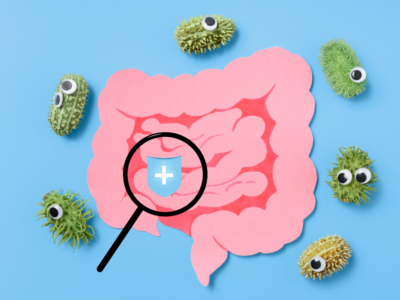After giving birth, one of the thoughts floating in the back of your mind might be, “when will my period come back? Will it be worse or better than before?”
Postpartum, and always, we are looking for a healthy period. We’ll detail that below, but first, it’s important to take inventory of your cycles prior to conceiving. That’s what we’re looking to regain postpartum.
I’ve worked with women over the past 10 years to help them reconnect their body, balance their hormones and achieve healthy, pain-free periods. And here’s what we know for certain: A healthy body creates a healthy period.
When you sleep well through the night, wake up energized before your alarm, are mentally clear throughout the day, have great bowel movements every day, and no aches and pain—that’s a healthy body.
As the mom of a busy 20-month old, I know feeling mentally clear and energized can feel like a delusion, but I assure you it’s not. When I can’t get out of bed in the morning, feel fatigue throughout the day, or skip a day in between bowel movements, my period goes wonky.
What does a healthy period look like?
Most of my clients don’t know exactly what a healthy period is. They do know that they’re tired of going to the gyno for answers to their heavy, debilitating or irregular periods and hearing, “it’s normal”, “it’s common”, or “take birth control” as the only options.
But, no, it’s not normal. It’s not normal to suffer every month. Having a bad cycle every once in a while isn’t what I’m talking about here. It’s perfectly OK to fluctuate one month or maybe even two. But the moment that irregular period becomes your normal, it’s time to make some moves to reset your body.
So what does a healthy period look like? A healthy menstrual cycle is close to 28 days with a period that lasts 4-6 days. The first 1-2 days should be your heaviest with your flow becoming lighter every subsequent day.
Some doctors would give you a range of 24-35 days as OK. What I’m looking for in my clients is a consistent period every X number of days without too much fluctuation in that X. So, if your magic number is 27, then every month we’re hitting 27. If you’re 29 you’re always 29. Not, 63, then 52, then 40, or 24.
Most importantly, you shouldn’t dread your period coming. It should come and go without drama. Not much pain, mood swings, or blood baths.
3 tips to get your cycle on track
Here are the most common tips I share with my clients for regulating their cycle. The best thing about these tips? They’re easy. We don’t need to over complicate things. We’re moms and our lives are already complicated!
First, be sure that breakfast, lunch and dinner have some sort of green leafy vegetable. Greens help detoxify your cells and provide essential nutrients for optimal hormone health. They also help in the bowel movement area by adding fiber to our diet.
Try making a green smoothie for breakfast—this is one of the easiest ways I’ve found to get some greens in the morning.
- 2 cups of green leafy vegetables
- 1 cup of your favorite fruit
- 2 cups of a plant-based milk
- 1-2 tablespoons of flaxseed powder or chia seeds
Second, give seed cycling a try. This involves consuming different seeds during different times of your cycle to support your estrogen and progesterone levels when they are highest..
In the first half of your cycle (about day 1 to 14) estrogen levels are highest, while in the second half of your cycle (about day 14 to 28), progesterone levels are highest.
For days 1 to 14, eat 1-2 tablespoons of fresh ground flax seed and raw pumpkin seed daily. For days 14 to 28, try to consume raw sunflower seeds and sesame seeds daily.
You can accomplish this by adding these seeds to your smoothie, oatmeal or salads, snacking on them, making fresh seed butter to have with toast or fruits, or make a granola.
Disclaimer: seed cycling won’t do it’s magic if you’re not eating a nutritionally-balanced, healthy diet—ditch processed foods, make sure you’re getting enough water and focus on whole foods.
For my clients that have a pretty good diet and add this to their regimen, it quickly got a period that’s starting to get out of control back on track for the next period. On average, most clients see the effects of seed cycling in 2-3 cycles.
Third (and the most simple but hardest): get enough water. Ideally, you should aim for half your weight in ounces. For example, if you weigh 160 lbs, that’s 80 ounces of water every day.
If you’re consuming green leafy vegetables and fruits that can add some of your water intake, but not all. Drinking water in tea is ok too, but we’re looking for fresh water as best we can.
With time, these tips will help get your body on track. They seem simple, but your body isn’t as complicated as some would have you think. Above all, remember that you are perfect the way you are. Let’s support our bodies like we support everyone else.



